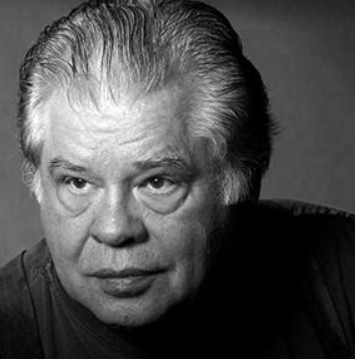for Jerome Rothenberg
Anguish, a door, Le Portel, the body bent over jagged rock,
in ooze, crawling in darkness to trace the button of itself
--or to unbutton the obscure cage in which a person and an
animal are copulas--or are they delynxing each other? Or
are they already subject and predicate in the amniotic cave
air watching each other across the word barrier, the flesh?
*
At arm's length the image, my focus the extent of my reach.
Where I end the other begins. And is not all art which gen-
uinely moves us done in the "dark" against a "wall"? Olson's
whisper (a prayer), "(boundary
Disappear."
*
Artaud's hatred of depth near the end of his life. All real
action, he ranted, was at surface. Beyond? Nothing. Below
and above? Nothing. At the same time he desired to be or-
ganless, eternal. James Hiliman writes: "Every rebirth fan-
tasy in psychology may be a defense against depth." If com-
ing up out of the cave of night can mean an openness to know-
ing we've never left the cave, then rebirth ceases to be an-
tagonistic to depth.
*
The beginning of the construction of the underworld takes
place in Upper Paleolithic caves. To identify this "place
under construction," I use the later Greek word "Hades,"
and it is there that the first evidence of psyche we can
relate to occurs. To be in the cave is to be inside an an-
imal--a womb--but to draw there is to seek another kind of
birth; an adjustment to the crisis of the animal separat-
ing out of the human--or, the Fall. To be inside, to be
hidden, to be in Hades--where the human hides in the animal.
*
Semi-conscious scanning through the lich gate. Wandering
the winding windows of images. Knowing that as we see through,
we only at best see into dream to touch the cave wall socket
in which the current is called animal. Its adamant muzzle
confers moisture on my deathly palm.
*
Since the hidden is bottomless, totality is more invisible
than visible. Insistence on a totality in which life is tot-
ally visible, is the anti-dream, Hades deprived of his cave,
Satan attempting to establish a kingdom--or death camp--
solely on earth.
*
As species disappear, the Upper Paleolithic grows more vivid.
As living animals disappear, the first outlines become more
dear, not as reflections of a day world, but as the primal
outlines of psyche, the shaping of the underworld, the point
at which Hades was an animal. The "new wilderness" is thus
the spectral realm created by the going out of animal life
and the coming in, in our time, of these primary outlines.
Our tragedy is to search further and further back for a
common non-racial trunk in which the animal is not separated
out of the human, while we destroy the turf on which we
actually stand.
Credit
From Juniper Fuse: Upper Paleolithic Imagination and the Construction of the Underworld (Weselayan, 2003). Copyright © 2000 by Clayton Eshleman. Reprinted by permission. All rights reserved.
Date Published
01/01/2000

